 |
The Little Star That Could (Preschool - 3rd) 30 min
Little Star is just an average star in the Milky Way galaxy. He has no name and no planets. He decides to go on a journey through the galaxy to find some planets and a name for himself. During his quest, while learning the differences between stars, planets and moons, he finds that he really is a very special star. Little Star is an entertaining program for children and adults. |
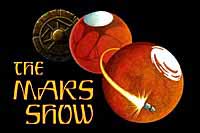 |
The Mars Show (5th - Adult) 41 minACT I: "Mars In The Mind's Eye": The show begins with an "incantation" of the various names of Mars given by different cultures. As our knowledge grows, our perception of Mars evolves from god to planet. Schiaparelli's telescopic observations and sketches are described. We discuss Lowell's observatory and fascination with "Martians"; the appearance of Martians in popular literature; and we hear excerpts from Wells and Welles versions of "War Of The Worlds."
ACT II: "Mars In Focus": Mars as we know it today: as seen in the night sky, and through binoculars and telescopes. A lap-dissolve sequence of the planet's appearance as it nears perihelic opposition is pictured. The climate and terrain of Earth and Mars are compared. We feature Mariner, Viking, and Phobos mission results, and explore Valles Marineris, Olympus Mons and the moons Phobos and Deimos. The probable geologic history of the planet and a rationale for future exploration are presented.
ACT III: "Mars In The Future": Focuses on current and proposed missions by the United States and Russia, including ongoing Hubble Space Telescope observations, and plans for manned Mars missions. The show ends with a poetically-styled "ode to Mars" epilogue, this time from a future perspective; tracing the first steps to our eventual civilization on the Red Planet. |
 |
IBEX: Search for the Edge of the Solar System
A new NASA mission that explores the outer edges of our solar system is featured at the Adler Planetarium and Science Museum in Chicago. NASA launched the Interstellar Boundary Explorer mission, or IBEX, October 19, 2008. This is the first NASA spacecraft to image and map the dynamic interactions taking place where the hot solar wind slams into the cold expanse of space. This program details the IBEX spacecraft's exploration of the outer solar system using energetic neutral atom (ENA) imaging to create the first global maps of interactions between the million mile-per-hour solar wind and the low-density material between the stars, known as the interstellar medium. Using these data, researchers will examine the structures and dynamics of the outer heliosphere and address a serious challenge facing human exploration by studying the region that shields Earth from the majority of galactic cosmic ray radiation. The planetarium show also moves behind the scenes of the mission to spotlight a few of the countless tasks involved in developing a NASA mission and the hundreds of national and international collaborators and contributors that make them happen. IBEX's unique and relatively inexpensive launch method — dropping from an aircraft and launching aboard a Pegasus rocket, and then using its own solid rocket motor and hydrazine propulsion system to move into an orbit nearly out to the Moon — is also shown. FULLDOME PRODUCTION |
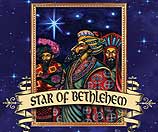 |
Star of Bethlehem (family) 25 min
Who were the wise men? Were there just three? Did they come from Persia, Babylon or Ethiopia? Did they follow a visible star to Jerusalem? Was Jesus born 2005 years ago? Is December 25th his real birthday? Star of Bethlehem is a new planetarium show at the SMSU Planetarium that answers these questions and more, as audiences search for a celestial object that could have led the wise men to the Christ child. A planet was called a "wandering star." A meteor was a "shooting star." And a comet was a "hairy star" because its tail looked like a beard. These are all candidates in our search. The SMSU Planetarium has been telling the story of the Christmas Star for thirty five years. Discover what this event might have been and how it could have guided the wise men to Jerusalem and on to Bethlehem. Using the Planetarium's digital star-field simulator, we will recreate the night sky at the date and time of Christ's birth to see what the wise men could have seen and to discover if the Star of Bethlehem was a celestial event or a miracle. FULLDOME PRODUCTION |
 |
Honey, I Shrunk The Solar System (4th-8th) 35 minHoney, I Shrunk The Solar System is story about a girl named Abby, who decides to build a model of the Solar System for the Science Fair. Abby quickly learns that even a shrunken solar system will not fit in the school gymnasium. In fact, it is still so large that Abby's dad must explore it by bicycle! Honey, I Shrunk the Solar System explores the sizes and distances of objects in our solar system. Join us on a voyage of discovery with Mr. Phelps (Dad) as he goes on a mission to explore the wonders of Saturn's rings, the bizarre moons of Jupiter, the canyons and dead volcanoes of Mars, and much, much more! |
 |
The Planets Show (4th - Adult) 28 minThis program takes its audience on a virtual tour of the solar system starting with the Sun and working outward to Pluto and beyond. Each stop along the way includes several images and features the uniqueness of each planet. Other stops include the Moon, Mars' moons, the Asteroid belt, Jupiter's 4 largest moons, a Brown Dwarf, and an entire Galaxy. We also spot a comet, witness a meteor shower, and spot a tumbling asteroid that gets dangerously close. (Written by Roger Reede). |
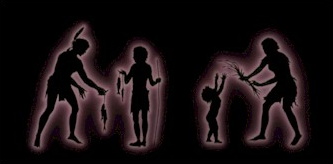 |
The People – Native American Mythology 45 minThe legends of the Indians are out of a past older than anyone knows. They are simple legends born of the ways of people who have lived as brothers and sisters with all of nature's creatures. Their roots are one with the land. All people who have ever lived on this beautiful earth have legends--stories of men who lived for greatness and beauty. If these legends were to die, surely something within the people would die with them. This program presents the mythology and sky lore of the American Indian. "The People" is an interweaving of the astronomical stories and knowledge of the first Americans, revealing the special relationship they felt with nature. The narration, artwork, and music are based on American Indian styles. |
 |
Adventures Along the Spectrum (4th - adult) 30 minFrom rainbows to distant stars and galaxies, light floods our Universe. Ranging from radio waves to gamma rays, at 186,000 miles per second, light is the fastest thing there is. But, what is light? Let bumbling Professor Photon unravel this mystery for you as he explores the properties of the electromagnetic spectrum in this light-hearted and informative program. This entertaining show will introduce you to the various regions of the electromagnetic spectrum. With Professor Photon, you can learn about radio, radar, microwave, infrared, visible, ultraviolet, x-ray, and gamma waves, and their importance in exploring our universe today. On this journey, you'll discover pulsars and neutron stars, super novas, active galaxies, black holes, and quasars. |
|
|
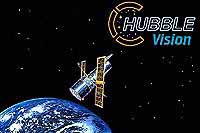 |
Hubble Vision (5th-Adult) 34 minStarting with the 1990 launch and deployment, we document Hubble's initial troubles and bad press, followed by the success of the First Servicing Mission. The show then explores the Hubble universe -- from nearby planets out to the edge of the cosmos. Included are the astounding images from Comet Shoemaker-Levy 9's crash into Jupiter; views of Mars, Saturn, and Pluto; proplyds in the Orion Nebula; rings around Supernova 1987a; and jets shooting from active galactic nuclei, powered by black holes. Using uncomplicated explanations, the show gives everyone a look at Hubble's optical discoveries as well as its achievements in ultraviolet spectroscopy. |
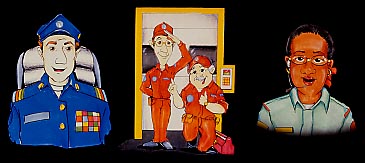 |
A Solar System Adventure Tour (3-6th Grade)This program is a participatory Solar System presentation for use with middle-elementary age students. The program allows students to become mission specialists while their spaceship takes them on an educational adventure past the sun, moon and planets of our Solar System (fellow crew members shown above). Upon entering the planetarium students are given one of three mission cards: Planet Specialist, Math Expert or Flight Engineer. During the flight the captain asks for information from a specific mission card. Upon this request, the student holding the card enters the data into an imaginary remote computer, which they are told ties into the main computer system. The information they think they supplied is timed to magically appear as data on the dome. The emphasis on astronomy education concepts combined with the participatory nature of the presentation give students a fun and interesting planetarium experience. Students often cheer at the end when they proudly complete their mission. **Group sizes must be at least 15.
Click Here for more information and study guide |
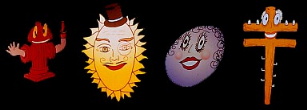 |
Zubenelgenubi's Magic Sky (Preschool - 2nd) 25 minCome to the SMSU Planetarium and meet Zubenelgenubi (Pronounced Zoo-Ben-El-Jen-New-Bee), or simply Zubee. Zubee will introduce your child to the wonders of the day and night sky. While Zubee wanders around the audience, other characters will pass by on the dome. These characters include Ms. Moon, Mr. Sun, Hydro the Fire Hydrant, and Tracy the Telephone Pole. "Zubenelgenubi's Magic Sky" is a fun, highly interactive program which introduces concepts such as "length of a day," "lunar phases," "constellations," "stars," and "planets." The show concludes with a fun twist on the ancient Cassiopeia/Andromeda legend. |
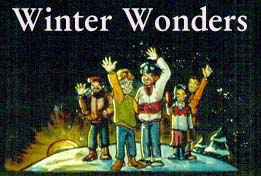 |
Winter Wonders (Family) 45 min"Winter Wonders," is a new program at the Southwest Minnesota State University Planetarium that examines events meant to brighten the winter solstice--the time of year when the noontime sun is lowest in the sky. Audiences will listen along with characters Jackie and Michelle as they learn about Christian and Jewish holidays during this time of year. “Winter Wonders” asks what the star over Bethlehem might have been. Possibilities explored include meteors, supernovae, comets, and planetary gatherings. We also look at why Christmas is celebrated on December 25th. The audience will learn about other solstice celebrations around the world and look at some of the light-hearted traditions such as gift giving, decking halls with greenery, and candles. The program includes solstice customs from central Africans, Chinese, Native Americans, Inuit and Incas. It concludes by looking at some of the monuments built by prehistoric peoples to honor the winter solstice. |
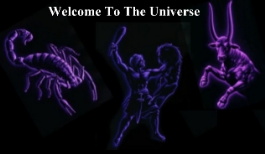 |
Welcome To The Universe (5th - Adult) 10 minWelcome To The Universe is a short program that treats its audience to the full wonders of the planetarium and the universe. It takes you on an outward journey which briefly covers early people and the stars, constellations, the Moon, the planets, stars, star clusters, galaxies, and clusters of galaxies. This show is normally used as a pre-show followed by the short version of More Than Meets The Eye. |
 |
The Explorers (5th - Adult) When Captain Cooke explored the Pacific ocean basin he expected to find a vast emptiness and unexplored land. Instead Cooke found people with a common ancestry and language scattered across 12,000,000 square miles of the open ocean. How could the Polynesians have settled all of these islands? How could they have sailed more than 2,400 miles to the islands of Hawaii without the benefit of the tools (sextants, chronometers, maps and compasses) used by the European explorers? This show focuses on the human spirit of exploration throughout time and space. The dome's starry sky is used to identify constellations, to observe what daily motion can tell us about way finding, and to study changes in the sky as the observer's latitude changes. During a live section in the program, the audience will get a chance to use their new knowledge to navigate from Tahiti to Hawaii with the same techniques Polynesians have used for thousands of years. Then join the crew of mankind's first voyage to the planet Mars as they use the same stars to guide them. |
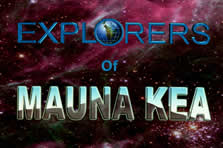 |
The Explorers of Mauna Kea (5th - Adult) 40 min Exploration starts with Hawaii's Mauna Kea, the highest point in the Pacific Basin, 14,000 feet above sea level, to where astronomers use the world's biggest telescopes to study the universe. Find out about the Hawaiian legends that explains geological facts including the movement of the mid-Pacific plate toward northern Asia. Meet Pele, the goddess of fire and volcanoes at Mauna Loa, and Poli 'ahu, the goddess of snow at white capped Mauna Kea. Then climb to the top of Mauna Kea to gaze at and the sky through the world's most powerful telescopes. We also discover weather inversions that keep clouds and dust below Mauna Kea's summit and the skies clear on the mountain for so many nights. Leading astronomers expose you to supernovas, comets, galaxy formation, extra-solar planets, and more. Each show has a live interactive section where the audience gets a chance to simulate how the mirrors of the giant Keck telescopes work! |
 |
Galaxies (7th - Adult) 38 minGalaxies takes us into space, on a cosmic journey through the stars of the Milky Way and the galaxies beyond. Conveying science within the framework of nature, Galaxies is presented as a nature walk on the grand galactic scale. Looking at Earth's night sky, we see a major spiral galaxy--the Milky Way--from within, then travel out to Alpha Centauri, the Pleiades star cluster, and the globular star cluster M3. The voyage of discovery continues through intergalactic space past the Andromeda Galaxy, the glittering star fields at the center of the Virgo Supercluster, and the lonely dwarf galaxies that sail the dark waters of intergalactic space. |
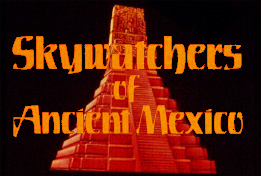 |
Skywatchers of Ancient Mexico (7th - Adult) 55 minThe Mayan, Aztec, Olmecs, and other civilizations of ancient Mexico were deeply concerned with the heavens. Their understanding of astronomy surpassed that of the Europeans. In this program we discover what these peoples saw in the heavens and how it affected their architecture, calendars, and religious beliefs. We also investigate the affects of the arrival of Europeans. (For example, in only 60 years 90% [23 million] of the Meso-American people were killed.) The Mesoamerican Indians established a highly advanced culture and constructed temples and other monuments that rivaled the pyramids of ancient Egypt. Many of the ancient religious sites built in what is present day Mexico by the Olmec, Toltec, and Mayan civilizations show significant alignments with the heavens. |
 |
The Dawn of Astronomy (7th - Adult) 51 minFor almost 5,000 years the pyramids of Egypt have stood guard near the banks of the Nile. Almost 5,000 years ago the megaliths of Stonehenge began to appear on England's Salisbury Plain. Through the centuries these man-made monuments have withstood earthquakes, wars, tourists, robbers, neglect, and natural decay. As an Arab proverb says: "All things dread time, but Time dreads the Pyramids." To erect such massive, "timeless" monuments, early man must have been intelligent and resourceful. But why build them at all? What was their purpose? In the SMSU Planetarium's star program The Dawn of Astronomy, we journey back in time to discover why the pyramids and Stonehenge were built. Visitors will see the splendor of the newly raised pyramids and watch as the Sun rises over the Heel Stone at Stonehenge. The incredible achievements of early man in measuring the length of the year, developing a concept of the zodiac, and predicting exactly how the Sun and Moon move in the sky are celebrated in The Dawn of Astronomy. |
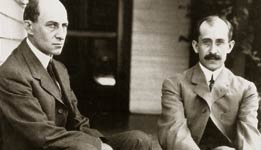 |
The Wright Way to FlyThis program celebrates the centennial of flight. It tells the story of the Wright Brothers' initial interest and methodical efforts that led them to be the first to fly a heavier than air machine. It describes their kites, gliders, flyers, and wind tunnels, In addition, it emphasizes the fundamentals of flight. |
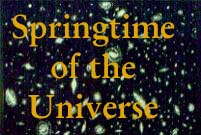 |
Springtime of the Universe 45 minFifteen billion years ago our universe began in a fantastic explosion. The stars and galaxies - all that we see about us - are the cooling remnants of that beginning. What lies ahead for the Earth and Sun? The stars? The universe itself? Discover the answers in "Springtime of the Universe." This program recreates the birth of the universe in time-lapse form and shows in moments what took billions of years to develop: the galaxies, the stars, and even our Sun and its planets. |
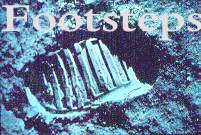 |
Footsteps"That's one small step for man...One giant leap for Mankind."
Footsteps tells the story of two worlds, the Earth and the Moon, and of man's fascination through the ages with our nearest neighbor. Journey 4.5 billion years into the past to witness the formation of the Earth, and its smaller pockmarked companion, from an immense cloud of gas and dust. Explore many of the myths from around the world that have sought to explain the Moon and its ever changing appearance in our sky. Finally, witness science fiction become reality as mankind journeys to the moon to take its first footsteps on this distant world. |
 |
Cosmos: The Voyage to the Stars 45 minThis show was written by the late Dr. Carl Sagan. Cosmos is about the human exploratory vision; about how we have come, in only a few thousand years, from projecting our hopes and fears up there among the constellations to visiting the planets and setting sail for the stars. We follow the exploration of Mars from childhood dreams in the nineteenth century to the spectacular realities of the Viking mission. We follow the course of the Voyager spaceships to the outer solar system. And we retrace the evolution of matter from interstellar gas and dust to stars and planets. Join Dr. Sagan on a personal journey through space and time. Through the lavish use of special effects, Cosmos will explore the intriguing possibilities of black holes, alternate universes, time travel, communication with extraterrestrial civilizations, the lives of the stars and galaxies, the future of the Earth, and the deepest questions concerning the origin and fate of the universe. We will travel with Dr. Sagan through the universe contained within a tiny cell, across two thousand years to the ancient Library of Alexandria, and to the point of embarkation for all our cosmic journeys: the human brain. |
|
Aurora!There is something magical about Auroras. They appear under the cover of darkness like ghosts, painting the sky with great splashes of color. They are strange, pulsating phantoms that dance hauntingly through the night. Then as quickly as they appear, they are gone! But the questions they inspire do not leave as quickly. What is the cause of Aurora? What gives them their shape and colors? "Aurora!" explores the answers to these questions and many others as well as how and when to observe these beautiful lights. |
























